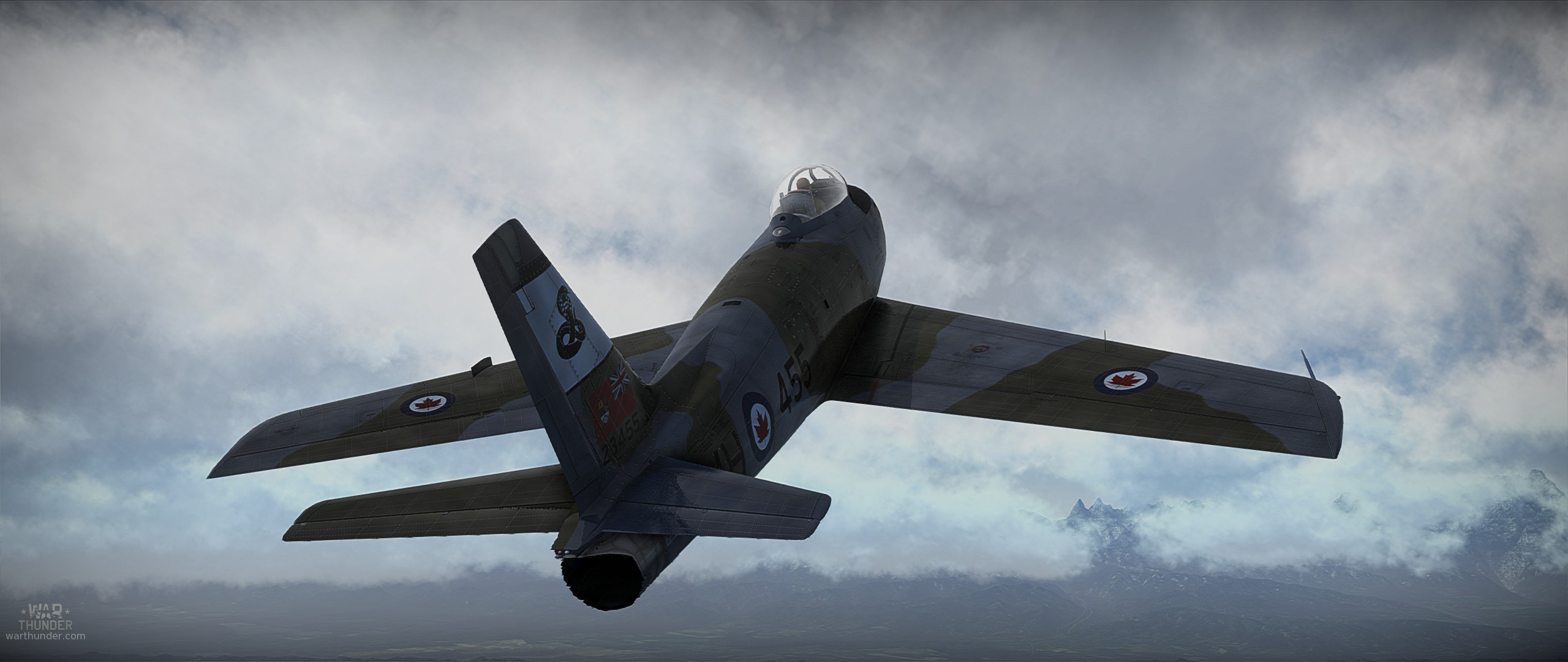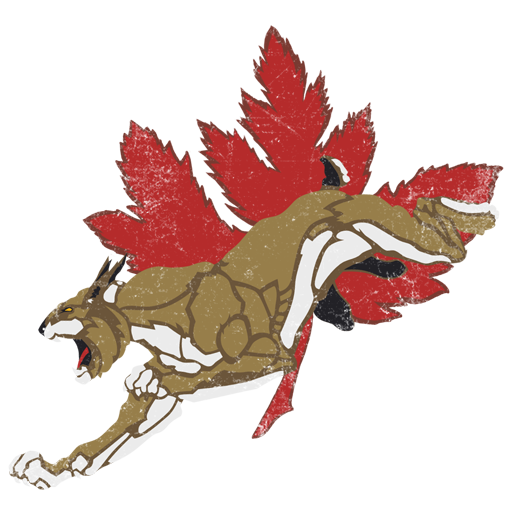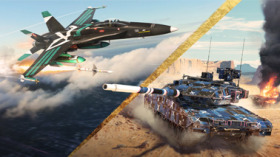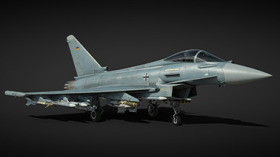
- Для PC
- Для Mac
- Для Linux
- ОС: Windows 10 (64 bit)
- Процессор: Dual-Core 2.2 GHz
- Оперативная память: 4 ГБ
- Видеокарта с поддержкой DirectX версии 11: AMD Radeon 77XX / NVIDIA GeForce GTX 660. Минимальное поддерживаемое разрешение – 720p.
- Сеть: Широкополосное подключение к Интернету
- Место на жестком диске: 22.1 Гб
- ОС: Windows 10/11 (64bit)
- Процессор: Intel Core i5 или Ryzen 5 3600 и выше
- Оперативная память: 16 ГБ
- Видеокарта с поддержкой DirectX 11 и выше: Nvidia GeForce 1060 и выше, Radeon RX 570 и выше
- Сеть: Широкополосное подключение к Интернету
- Место на жестком диске: 62.2 Гб
- Операционная система: Mac OS Big Sur 11.0
- Процессор: Core i5, минимум 2.2GHz (Intel Xeon не поддерживается)
- Оперативная память: 6 Гб
- Видеокарта: Intel Iris Pro 5200 (Mac) или аналогичная видеокарта AMD/Nvidia для Mac (минимальное поддерживаемое разрешение – 720p) с поддержкой Metal
- Место на жестком диске: 22.1 Гб
- Операционная система: Mac OS Big Sur 11.0
- Процессор: Intel Core i7 (Intel Xeon не поддерживается)
- Оперативная память: 8 Гб
- Видеокарта: Radeon Vega II и выше с поддержкой Metal
- Место на жестком диске: 62.2 Гб
- Операционная система: Современные дистрибутивы Linux 64bit
- Процессор: Dual-Core 2.4 ГГц
- Оперативная память: 4 Гб
- Видеокарта: NVIDIA GeForce 660 со свежими проприетарными драйверами (не старее 6 месяцев) / соответствующая серия AMD Radeon со свежими проприетарными драйверами (не старее 6 месяцев, минимальное поддерживаемое разрешение - 720p) с поддержкой Vulkan
- Место на жестком диске: 22.1 Гб
- Операционная система: Ubuntu 20.04 64bit
- Процессор: Intel Core i7
- Оперативная память: 16 Гб
- Видеокарта: NVIDIA GeForce 1060 со свежими проприетарными драйверами (не старее 6 месяцев) / Radeon RX 570 со свежими проприетарными драйверами (не старее 6 месяцев) с поддержкой Vulkan
- Место на жестком диске: 62.2 Гб
RCAF Canadair Sabre CL-13 Mk.5/6, aircraft 23445 of the 444 “Cobra” Squadron,
camouflage created by MightyArrow | Download here!
During the First World War, around 22,800 Canadians joined the British flying services, as a national Canadian air force was nonexistent. Some of them, like William Bishop, William Barker and Raymond Collishaw, scored among the famous fighter aces of the First World War, however any attempts to establish a national air force failed due to a lack of support from the Canadian government. It was not until 1920 that an independent Canadian Air Force was created as a part-time organization, and then in 1924, reorganized as a full department of the armed forces, named the ‘Royal Canadian Air Force’ (RCAF).
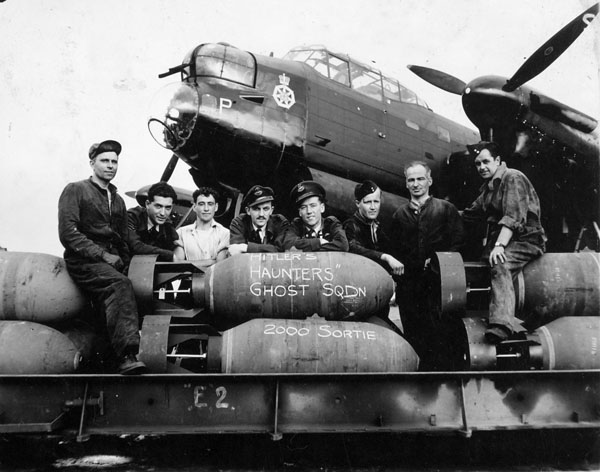 |
| Aircrew and groundcrew of a No. 428 Squadron RCAF Lancaster bomber |
Initially, it was largely considered a ‘peace’ and ‘defence operations’ force, with war training being scarce and done so in accordance with First World War tactics. Aviators were trained in short range reconnaissance and artillery spotting, but otherwise, only a small part of the RCAF programme was of military nature, as Canada had little to no interest in armed forces following its involvement in the First World War. The main tasks of the RCAF were thus connected to the "Civil Government Air Operations" programme, responsible for anti-smuggling patrols, protection of forests, and experimental development of engines and lubricants able to withstand the harsh Canadian winters. The RCAF also served as a postal service, with Canadian pilots pioneering mail transport by air. In regards to equipment, most aircraft used by the RCAF in the 1920s were Avro 504 trainers, followed by Curtiss HS-2L patrol flying boats.
In the 1930s, the world was struck with the Great Depression, and Canada was not an exception. Large budget cutbacks caused great reduction in RCAF activities. In the years to follow, when funds were at least partially restored, the RCAF placed a larger emphasis on its military capabilities, as a war with the aggressive Axis forces seemed more and more imminent. Even though efforts were made to prepare the RCAF for war, in 1939, following the outbreak of the Second World War, the Canadian air force consisted of only 4000 personnel and roughly 195 aircraft, most of them obsolete and unsuited for combat operations. Preparing this small force for modern war was an enormous task, but the Canadians accepted the challenge.
Using the nation’s vast coastlines, bases were constructed, housing over 300 maritime bombers and fighters, such as Lockheed Hudsons, annakad Hawker Hurricanes. The main task of this force was to protect the Canadian coastline and Allied shipping lines against the threat of German submarines. Eventually, after the fall of France in the spring of 1940, No.1 Fighter Squadron, being the only moder Canadian fighter squadron, was sent to assist the British during the Battle of Britain, along with individual Canadian pilots joining RAF ranks. Canadian men also partook in Commonwealth Air Training, along with pilots from other Allied nations. Training was held on a vast network of training airfields and in over a hundred flying schools across Canada. More than 131,000 pilots were trained on Canadian soil, 70,000 of them being Canadian. The majority of these pilots were then deployed overseas, including in Africa, Burma, Ceylon, India, the Mediterranean Sea, and Malta.
RCAF personnel were trained for all types of aircraft – from transport to heavy bombers.The largest Canadian formation overseas was No.6 (RCAF) Group under Royal Air Force Bomber Command – this group consisted of 14 RCAF bomber squadrons, initially consisting of Vickers Wellington and Handley-Page Halifax bombers and eventually transferring to Avro Lancasters. Twelve RCAF squadrons were serving under the RAF Fighter Command, eventually exchanging their Hurricanes for P-40 Kittyhawks/Tomahawks/Warhawks and Spitfires.
 |
| RCAF Lancaster of the 419 Squadron VR-R "Ropey", camouflage created by MightyArrow | Download Here! |
During the Second World War, many pilots were able to distinguish themselves. Flight Lieutenant George Beurling was one of the top scoring Commonwealth fighter aces with 31 confirmed kills. Flight Lieutenant Richard Audet also managed to destroy five German aircraft in a single sortie with his Spitfire. As for non-fighter pilots, Flying Officer Kenneth Moore, piloting the B-24 Liberator bomber in anti-submarine roles, sunk two German U-boats in the space of 22 minutes – a feat unmatched by any other pilot.
Two Canadian aviators also received the Victoria Cross, the highest Commonwealth decoration, albeit both were awarded posthumously. The first was awarded to Flight Lieutenant David Hornell, who was able to sink a German submarine despite being heavily damaged by anti-aircraft fire. Hornell sacrificed himself, staying in the cockpit, so that the rest of his crew could bail out. The second Victoria Cross was awarded to Pilot Officer Andrew Mynarski, whose bomber was hit and set ablaze. Without any hesitation, Mynarski threw himself at the flames in an attempt to rescue a trapped tail gunner, while the rest of the crew bailed out. With his clothes burning, and the bomber rapidly diving towards the ground, Mynarski was unsuccessful in rescuing the tail gunner, and bailed out at the last possible moment. Unfortunately, his injuries were too severe, and he died a few hours later.
After the end of the Second World War, the RCAF demobilized most of its personnel, with many military airfields being converted for civilian use. After transferring to the jet-era (with Gloster Meteors being the first RCAF jet fighters), the RCAF then assisted United Nations forces during the Korean War by providing logistical support, and eventually by sending its own aerial vehicles. Canada also became a valuable member of NATO in 1951, with No.1 Air Division being deployed in Europe and initially equipped with Canadair Sabres and CF-100 fighters. This formation assisted Coalition forces during the Gulf War (flying CF-18 Hornets at that time), and then remained in Europe until 1992. Since then, the RCAF has participated in many operations, such as the bombing of Yugoslavia, the war in Afghanistan, and Operation ‘Unified Protector’ in Libya. Today, the RCAF is one of the most modern air forces in existence, and is rightfully proud for its rich and long heritage.
Author: Jan "RayPall" Kozák
With an upcoming update, we will add
emblem of the 416th Lynx Squadron :
